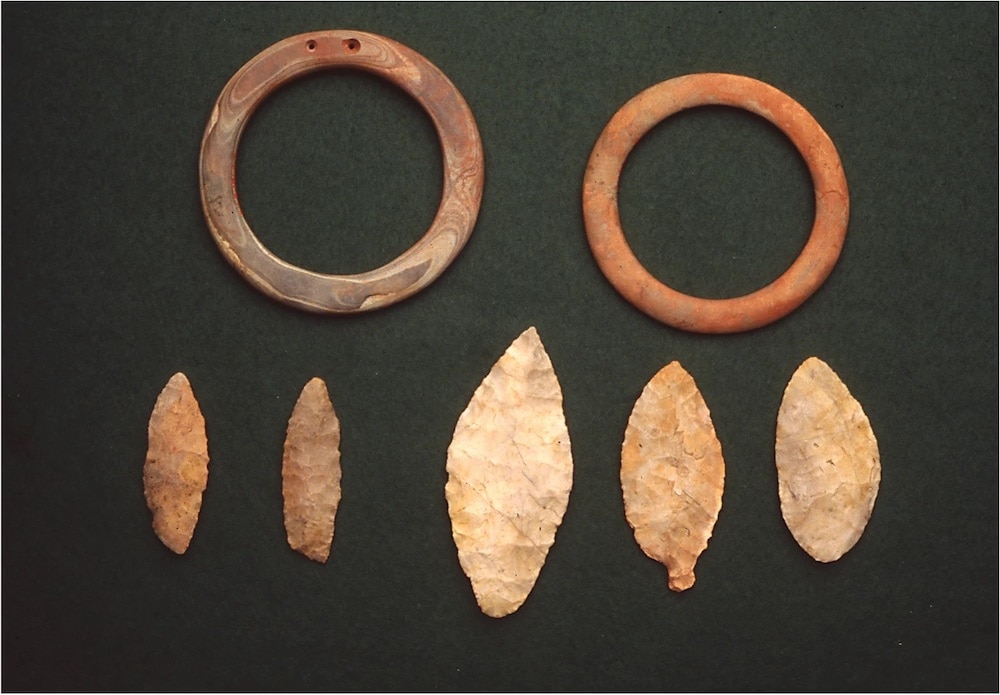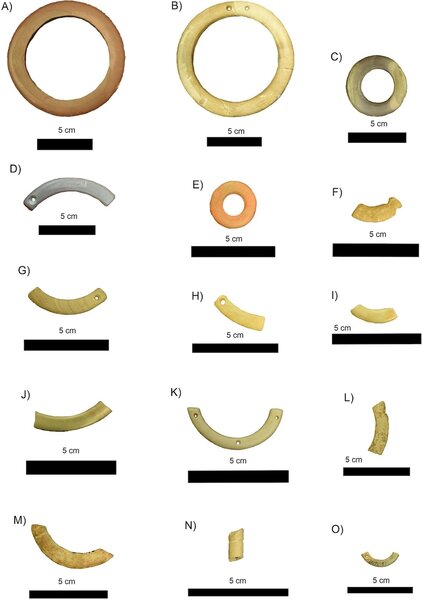Create a free profile to get unlimited access to exclusive videos, sweepstakes, and more!
We’ve been making and wearing friendship necklaces for 6,000 years
Suddenly, our childhood friendship jewelry doesn't seem so silly.

When The Croods: A New Age hit theaters in 2020, the prehistoric family we had come to know in the first movie were introduced to a swanky new family of seemingly more advanced humans, called the Bettermans.
In place of the Croods’s animal skin pelts and bare feet, the Bettermans wore fine garments and rope sandals. They even accessorized with turquoise jewelry. In the case of Phil Betterman, and later Guy, that jewelry took the shape of rings tied with thread and worn around the neck. The jewelry was an unspoken signal to audiences that they were a family or at least part of the same grouping, distinct from the Croods. It was played for laughs on screen, but new research regarding the fashion sensibilities of our hunter-gatherer ancestors suggests something similar actually happened.
Marja Ahola from the Department of Cultures at the University of Helsinki, and colleagues, analyzed fragments of slate rings found in the area surrounding Lake Onega, dating back approximately 6,000 years. Their findings, published in the Journal of Archaeological Method and Theory, suggest that these rings were sometimes intentionally broken, and pieces given to several individuals as a symbol of their relationship.
“First, they fashioned intact rings, then they were bashed and sometimes a hole or notches were added for fastening, but not always. They could, for example, have been carried in pouches and hidden. It maybe wasn’t about showing off the fragments, but having them with you,” Ahola told SYFY WIRE.
It’s unclear precisely what types of relationships these ancient friendship necklaces might have signified, and it’s possible they were associated with all manner of important social connections. What we do know is that hunter-gatherer groups in the region were wide-ranging but tended to congregate around areas like Lake Onega when necessary. The lake served as a reliable source of food and water, even when other sources dwindled, and taking steps to establish and maintain relationships with other groups might have been an important part of living together.
“We know these were small communities of hunter-gatherers who moved a lot, and they would have met each other. The rings might have been used when looking for new spouses from outside your own community, that’s one possible scenario,” Ahola said.
Identifying whether or not two fragments originally came from the same slate ring involved a laborious process of matching up approximately 200 pieces based on size, shape, color, and mineral composition. Researchers realized, however, that the manual process may not tell the whole story, as pieces could have been modified after the fact. To close that gap, they looked for chemical fingerprints in each piece to find those which were nearly identical, indicating they came from the same initial source.
It seems clear that carrying a fragmented piece of jewelry on your person represented a connection to any other pieces which remained elsewhere. Further examination of where pieces were found indicates those connections may have extended beyond interpersonal relationships with the living.
Fragments were found in association with sediment sites, suggesting the possibility that ancient peoples may have used them to remain connected to certain locations where important events took place. They also may have been used as mementos to remind the living of deceased loved ones.
“We have one burial site where we had two parts of a ring. It seemed these two fragments were positioned with different individuals, with a third piece missing. Maybe it was left with the living or positioned in some other place. It seems it’s not just a connection between the living, but also with the dead,” Ahola said.
Much like today, jewelry in the ancient world appears to have had deep symbolic meaning and served as a tactile reminder of abstract relationships with friends, family, and people or places we’ve left behind. The next time you see a cheap, plastic set of friendship necklaces, take a moment to recognize that, although they might seem silly, they have a rich history dating back thousands of years.



























